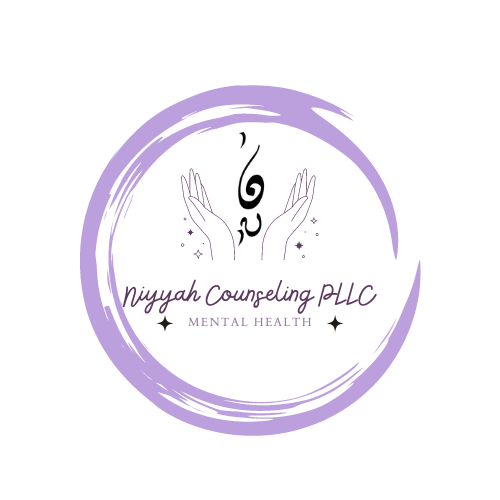Generational Trauma: Recognizing Trauma Responses in Everyday Life
Generational Trauma: Recognizing Trauma Responses in Everyday Life
Generational trauma, also known as intergenerational or transgenerational trauma, refers to the emotional and psychological effects of trauma that are passed down from one generation to the next. While the initial trauma might have occurred decades ago, its impacts can ripple through families, shaping behaviors, relationships, and even health outcomes. Recognizing how generational trauma manifests in everyday life is essential for breaking the cycle and fostering healing.
What Is Generational Trauma?
Trauma doesn’t end when the event is over. The emotional and psychological scars can linger, altering how individuals cope and interact with the world. In families, these coping mechanisms can be unconsciously taught or modeled for the next generation. For example, a family that survived war or systemic discrimination might develop hyper-vigilance, avoidance, or other trauma responses that get passed along, even when the immediate threat has subsided.
The field of epigenetics provides insight into how trauma might also leave biological marks, influencing gene expression and creating vulnerabilities to stress or anxiety in descendants.
Signs of Generational Trauma in Daily Life
Generational trauma can be subtle, making it difficult to identify. Here are some common ways it may appear in everyday life:
Difficulty Trusting Others:
Traumatic experiences, especially those involving betrayal, can lead to mistrust. Descendants may grow up learning to keep their guard up, impacting their relationships and ability to connect deeply with others.
Fear of Failure or Perfectionism:
A parent who lived in an unstable or high-stakes environment may unknowingly transfer a fear of failure or a need for perfection to their children. This can manifest as chronic self-doubt or overachieving tendencies.
Hyper-Vigilance and Anxiety:
Constantly scanning for danger or assuming the worst, even in safe environments, may stem from past trauma. Descendants may struggle to relax or feel safe.
Emotional Numbing or Avoidance:
Families with a history of trauma might adopt a "don’t talk about it" mentality. As a result, descendants may have difficulty processing emotions, leading to numbness or avoidance.
Conflict and Communication Struggles:
Trauma responses like defensiveness, withdrawal, or aggression often emerge in stressful situations. These learned behaviors can hinder healthy communication within families and relationships.
Physical Symptoms:
Chronic stress and trauma are closely linked to physical health issues. Descendants of trauma survivors may experience unexplained aches, fatigue, or other somatic symptoms tied to inherited stress responses.
Recognizing Patterns and Breaking the Cycle
Awareness is a critical first step in addressing generational trauma. Here’s how to start identifying and interrupting trauma patterns:
Reflect on Family Histories:
Ask about your family’s past. Understanding the context of their experiences can provide insight into behaviors and beliefs that may have been passed down.
Examine Behavioral Patterns:
Identify recurring themes in your family dynamics. Are there unspoken rules, repeated conflicts, or behaviors that seem tied to fear or survival?
Pay Attention to Emotional Responses:
Notice when you’re overreacting, withdrawing, or feeling "stuck." These may signal inherited trauma responses.
Educate Yourself on Trauma:
Learning about the impact of trauma can help you understand its effects on the mind and body, reducing shame or self-blame.
Strategies for Healing
Breaking the cycle of generational trauma requires intentional work, often supported by professional guidance. Here are some actionable steps to promote healing:
Seek Therapy:
Trauma-informed therapy, such as Eye Movement Desensitization and Reprocessing (EMDR) or somatic experiencing, can address both the emotional and physiological impacts of trauma.
Practice Mindfulness:
Mindfulness techniques can help you stay present, reducing reactivity and cultivating self-awareness. This is essential for breaking automatic trauma responses.
Build Emotional Literacy:
Learn to identify, label, and process your emotions. Emotional literacy empowers you to respond consciously instead of reacting reflexively.
Foster Connection:
Strengthen supportive relationships. Vulnerability and trust can help disrupt patterns of isolation or mistrust that trauma often perpetuates.
Engage in Generative Activities:
Creative outlets like journaling, art, or movement can help process and release unresolved emotions, promoting healing for yourself and future generations.
Moving Toward Resilience
Recognizing and addressing generational trauma is a courageous act. While the effects of past trauma are deeply ingrained, resilience can also be passed down. By acknowledging patterns, seeking help, and practicing healthy coping strategies, you can break free from the cycle and foster a legacy of healing and hope.
At Niyyah Counseling, we’re committed to helping individuals and families navigate the complexities of trauma. Our compassionate therapists provide tailored support to guide you through the healing process. Contact us today to start your journey toward greater self-awareness, connection, and resilience.
